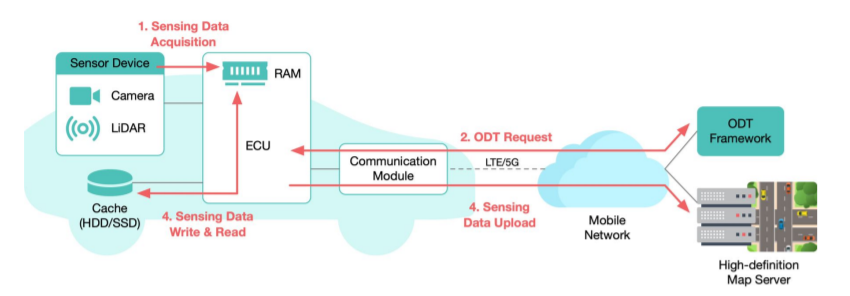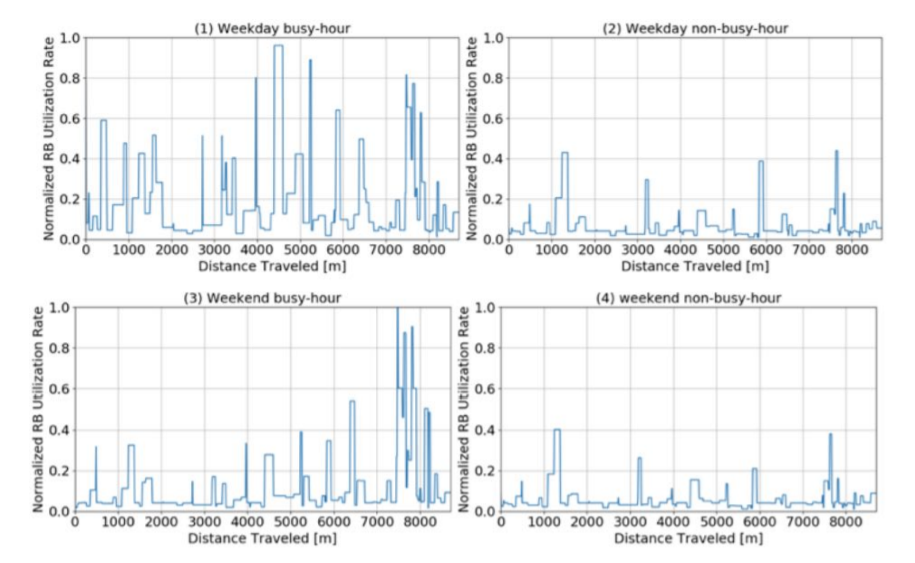The AECC is dedicated to advancing global network architectures and computing infrastructure to address the data transfer requirements of the growing connected car services ecosystem. Our Proof of Concept (PoC) program focuses on real-world demonstrations showcasing AECC solutions’ efficacy in managing expanding data needs.
Contributing a PoC proposal is a great way to get involved with the AECC and our work in helping to shape the future of the global connected vehicle ecosystem. Any company can take part in our PoC program if at least one member company is part of the resulting PoC proposal. Explore our proposal library to see how AECC addresses current challenges in the connected vehicle realm.
If you’re interested in participating in a PoC proposal, please reach out to [email protected]
AECC Proof of Concept
Using Opportunistic Data Transfer for Connected Vehicles to Reduce Cell Congestion in Existing Mobile Networks
By DENSO Corporation, KDDI Corporation, and Toyota Motor Corporation
Abstract
A fundamental requirement for connected vehicles is an efficient mobile network such as LTE or 5G. Network congestion can instantly impede the safe and effective operations of on-board navigation systems, sensors, and other systems linked to edge and backend compute. The utilization rate of a mobile network drastically varies depending on location and time. To be ready for peak usage, the network requires sufficient resources on hand, even for reduced loads carried during non-busy hours. This AECC proof of concept is about shifting transmission of lower-priority data to non-busy hours, which enables the mobile network to support connected vehicles deployed at scale with existing network resources. The AECC’s concept, called Opportunistic Data Transfer (ODT), is based on the 3GPP’s standard called Background Data Transfer. ODT enables non-time-critical traffic, such as software updates, to transmit during non-busy hours. The study tested a proposed framework that enables connected vehicles to use Opportunistic Data Transfer. The framework is operated by a mobile network operator to expose an API, which confirms if sufficient resources are available or not for the requested Opportunistic Data Transfer. This study also evaluates the effectiveness of the proposed framework based on actual data from LTE base stations.
Business Strategy
The traditional mindset of “throwing bandwidth at it” to resolve network congestion will be too expensive and impractical to scale as global deployment of connected vehicles climbs to hundreds of millions, and eventually billions of mobile users. The business strategy for this proof of concept is to verify a low-cost, distributed approach to reduce network congestion for a growing spectrum of mobile services – without having to scale network infrastructure with unnecessary overcapacity for off-peak transmission requirements.
Proof of Concept Objective
The objective was to confirm that Opportunistic Data Transfer can work in a real LTE environment to reduce network congestion with more efficient use of existing network resources. ODT essentially moves low priority data during off-peak hours to avoid disruption of critical connected services during peak hours. ODT is technically enabled by controlling an on-vehicle cache, which uses ODT when the cache is low, and does not transmit data when the cache is high. Another goal was to discover how much cache storage is required for effective ODT.
Proof of Concept Scenario
Our study simulated a connected vehicle high-definition mapping application used in the LTE network in metropolitan Tokyo, Japan. The HD mapping application used an API standardized by 3GPP for Background Data Transfer, which was modified to include parameters crucial for connected vehicle applications such as username and IP address; these parameters are applied by a mobile network operator to apps and devices in vehicles using the network. The proposed framework, shown in Figure 1, exposes the API for third-party applications in connected vehicles using an Open API 3.0 format. In the LTE, the Service Capability Exposure Function exposes the API, and in 5G, the Network Exposure Function exposes the API.
Fig. 1. Framework for Opportunistic Data Transfer in Connected Vehicles

In this scenario, we assumed that a vehicle traveling through Tokyo would indicate mobile network resource availability during the travel route and feasibility of the connected vehicle application with the ODT framework. The framework addresses user data and big data. User data is generated by critical onboard sensors and is always assigned highest priority for transmission, such as by the navigation system, electronic control unit, data communication module, and telematics control unit.
The opportunity for ODT caching is big data. High priority big data should not be dropped. This includes software or firmware for over-the-air usage, images or videos of road obstacles or changes in road shape used for HD mapping. Middle priority data, which includes videos whose size can be controlled by changing the frame rate, or images that can be downsized by reducing quality, can be thinned out. ODT is especially viable for low priority data, such as videos or images with redundant or static information; these are prevalent with similar videos and images uploaded from multiple vehicles.
The scenario evaluated the effectiveness of the framework by simulating generations of an HD map validated by actual data about usage of radio resources in the Tokyo area. The data for actual LTE base stations included geographical information and an hourly average of the resource block (RB) utilization rate. The RB utilization rate indicates the percentage of allocated time-frequency radio resources for mobile users served in the LTE base station. Figure 2 shows the process flow for the HD mapping application using ODT.
Fig. 2. Connected Vehicle HD Mapping Application with ODT

Proof of Concept Results
Results of this evaluation show that the HD mapping application can effectively use the ODT framework with reasonable cache size, even during busy hours. Results include data for a travel route used during four timeframes with potential for various levels of network congestion:
- Weekday busy-hour
- Weekday non busy-hour
- Weekend busy-hour
- Weekend non-busy-hour
Figure 3 shows normalized resource block utilization rates on the simulation’s travel route. Figure 4 shows the related cache size.
Fig. 3. Normalized Resource Block (RB) Utilization Rate on Travel Route

Fig. 4. Cache Size on Travel Route

The results show that ODT works effectively in a real commercial LTE network because the scheme decreases utilization of loaded or congested cells by mobile devices during peak periods (i.e., “non-ODT periods”).
The required size of a cache depends on various factors such as location, data, and applications; in the proof of concept, the required size for the Tokyo area was about 62MB. Assumptions for this number included four cameras per vehicle, image files of 2MB, intervals of taking an image of 10 seconds, and bandwidth for uploading of 10Mbps.
Finally, the overall design of on-board caching is one of the most challenging tasks for implementation of ODT. A key variable is an additional requirement for on-board caching by mechanisms other than ODT. Automotive components manufacturers such as DENSO will be critical players in the design and production of effective caching for ODT.
Next Steps
Additional proof-of-concept studies will be needed for assessing the implementation of the AECC’s proposed framework and for a security assessment. Toward this end, AECC invites the collaboration of member companies and other stakeholders who are interested in developing efficient data transmission for connected vehicles and associated applications and services.
AECC members are key players in the automotive, high-speed mobile network, edge computing, wireless technology, distributed computing, and artificial intelligence markets. Our research is focused on validating new approaches to enable implementation of business models for connected vehicles.
If you are a stakeholder or potential stakeholder in the future of connected cars, we encourage you to learn more about becoming a member of the AECC. With collaboration among OEMs, MNOs, network/computing solutions, app, and service providers, the AECC can help with the progression of developing high-value digital services across the connected vehicle ecosystem. Get in touch to learn how you can help invent the future of connected cars and follow us on Twitter and LinkedIn to stay up to date.
